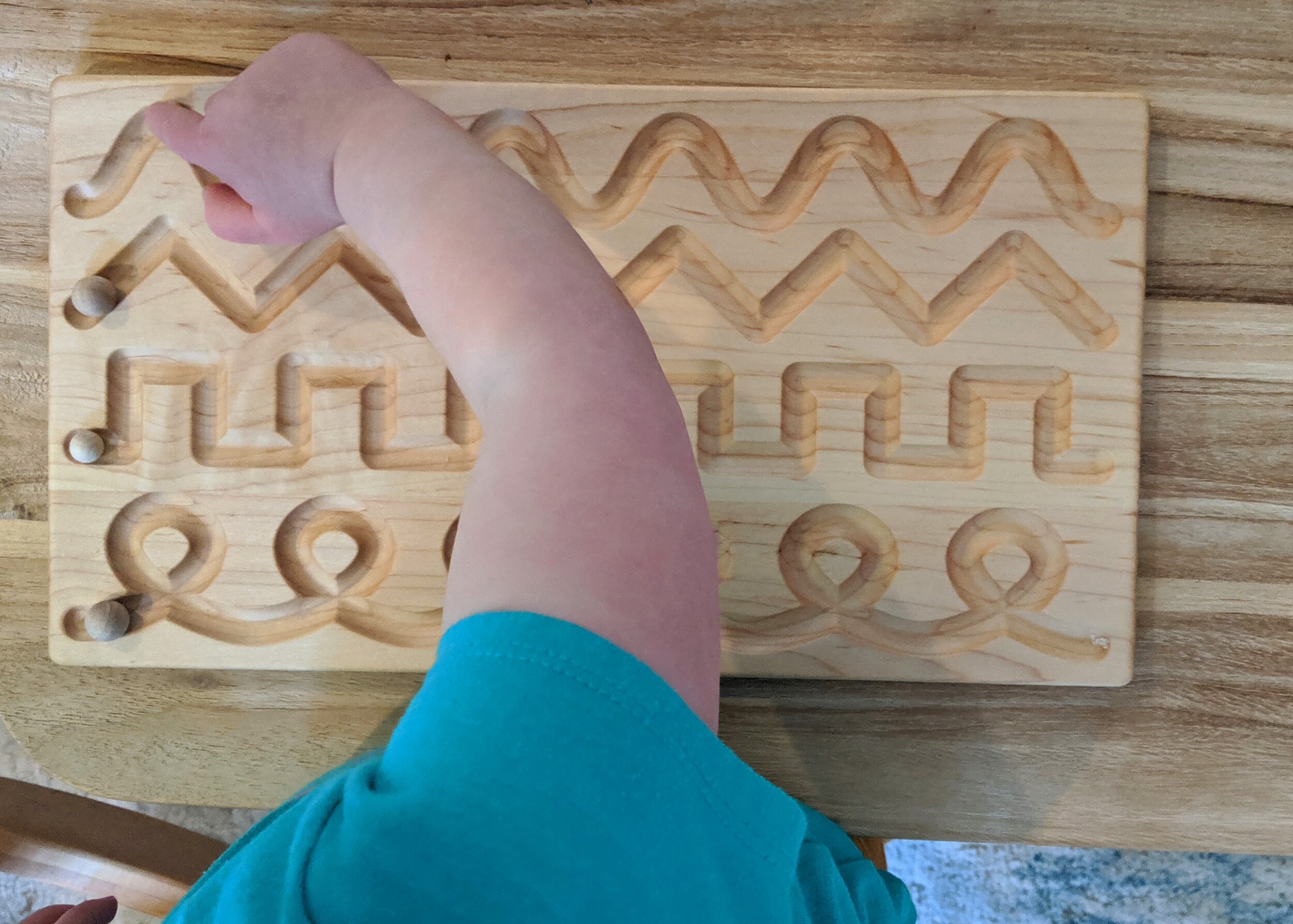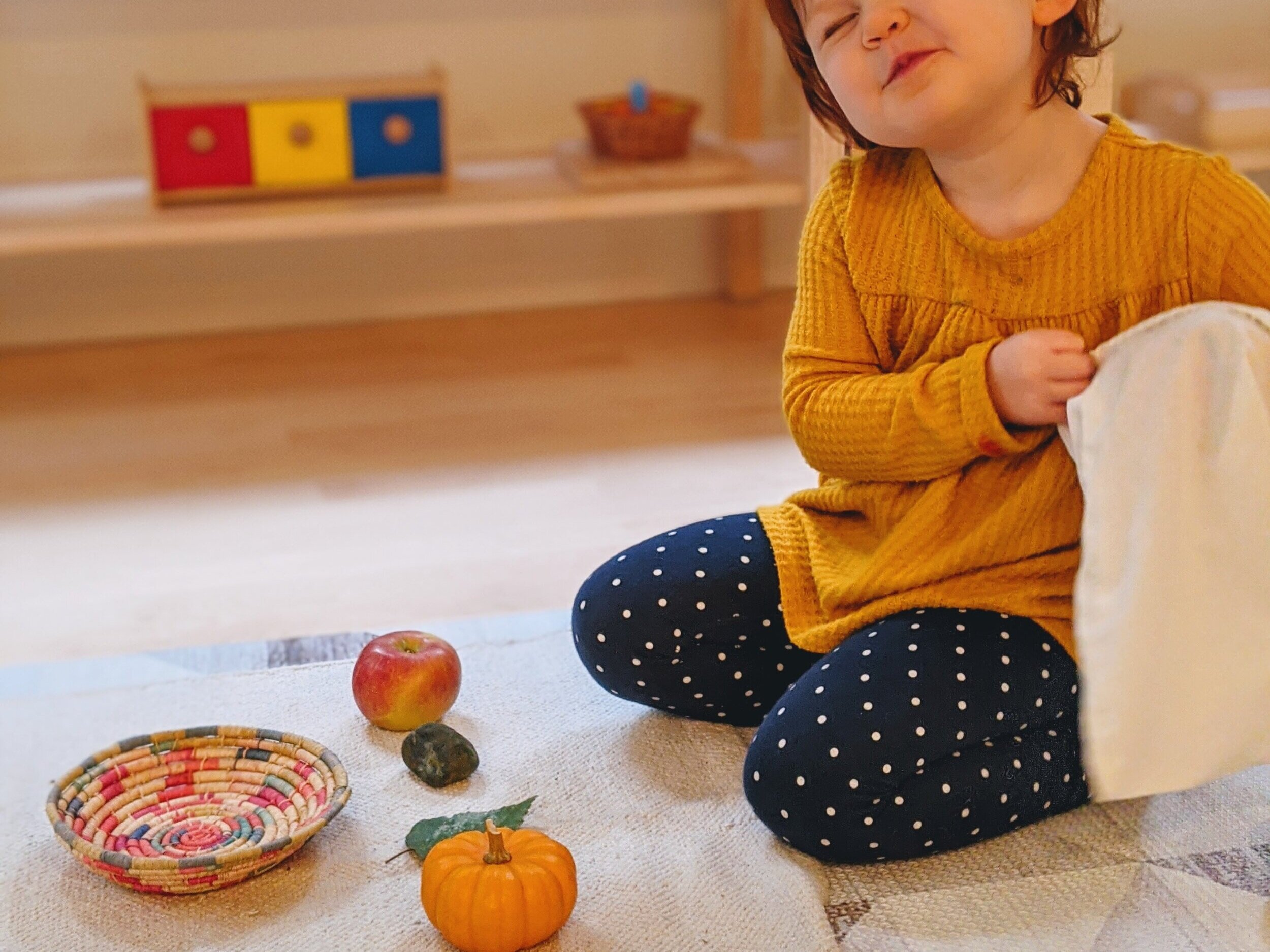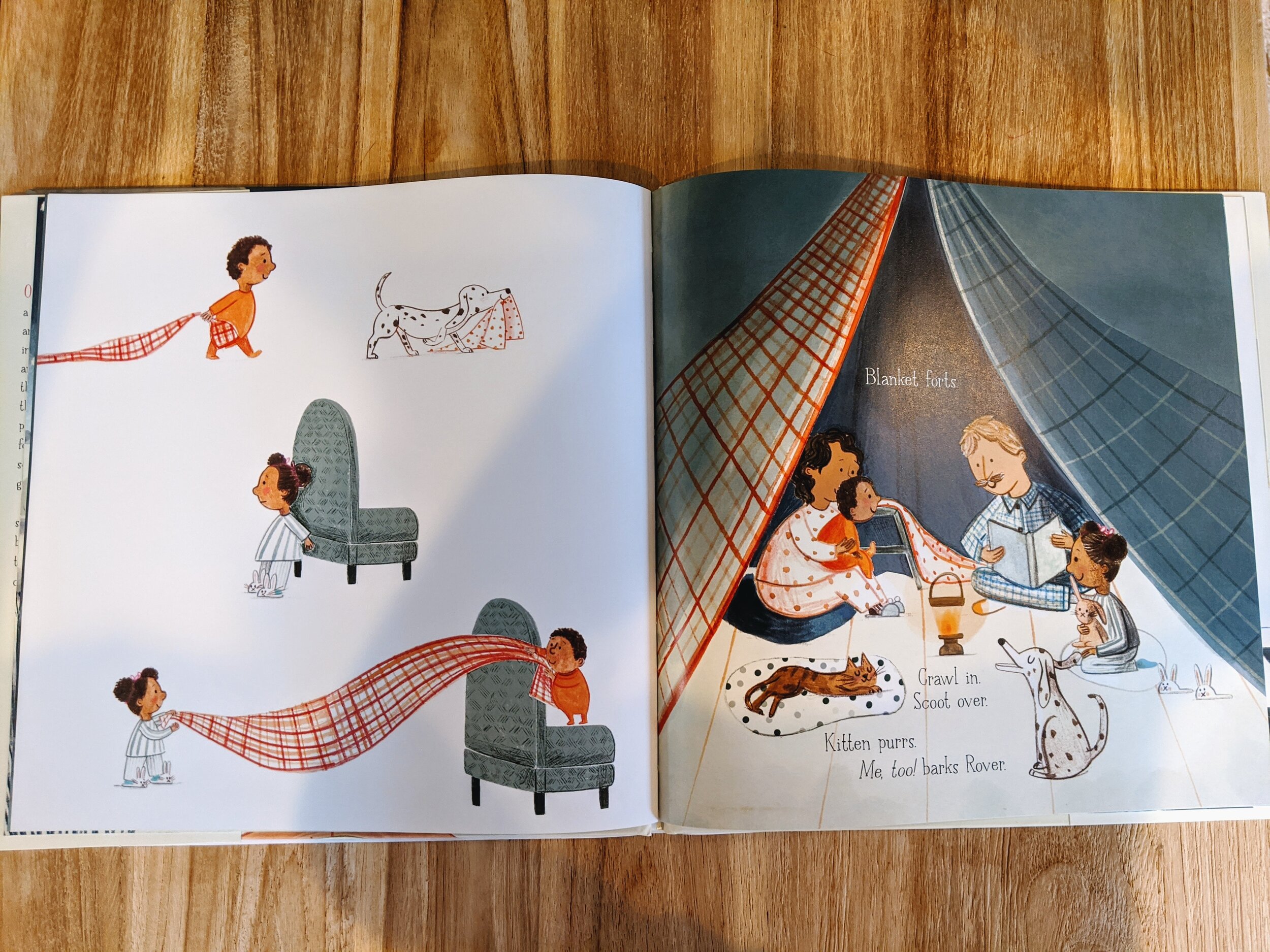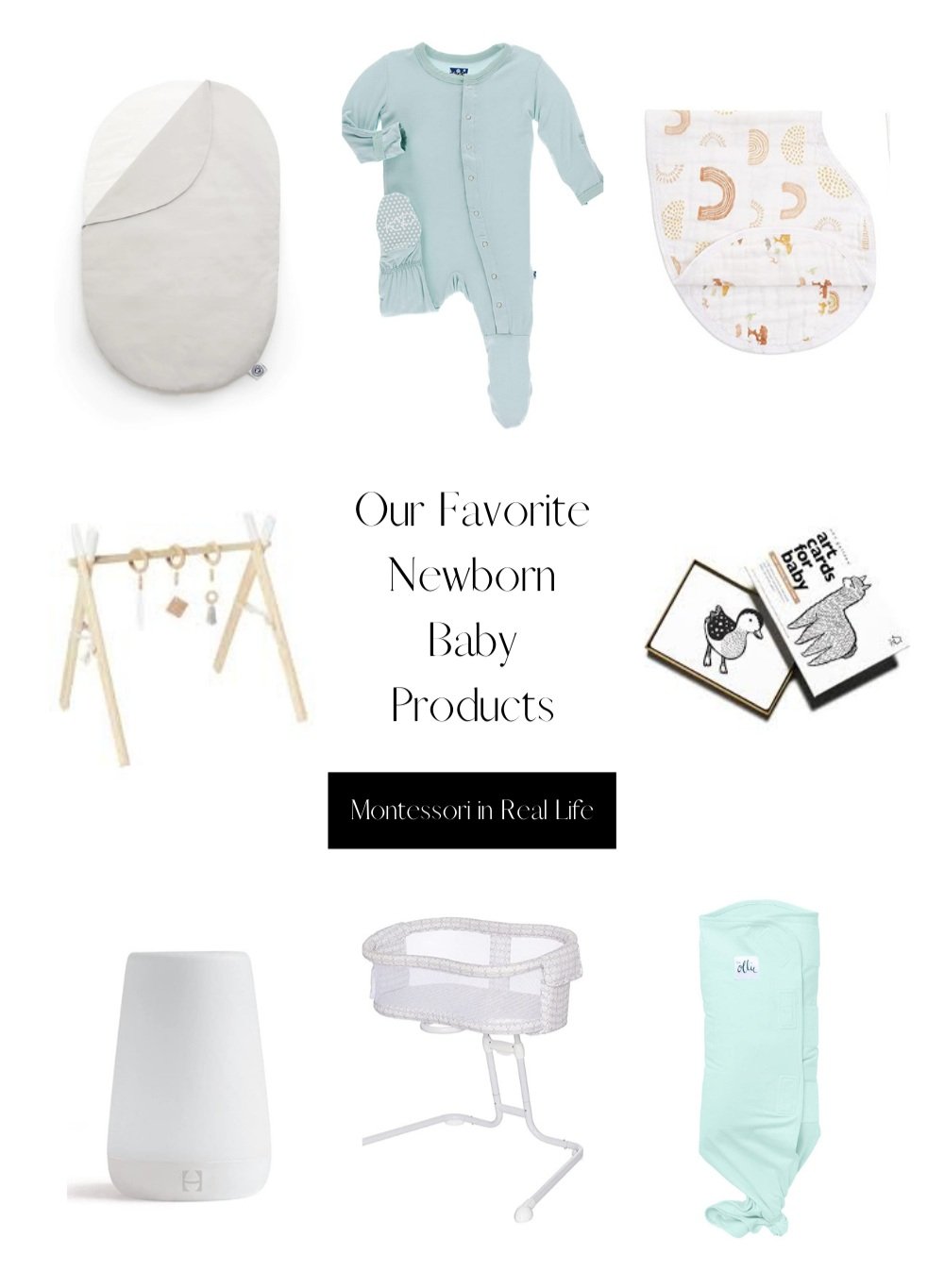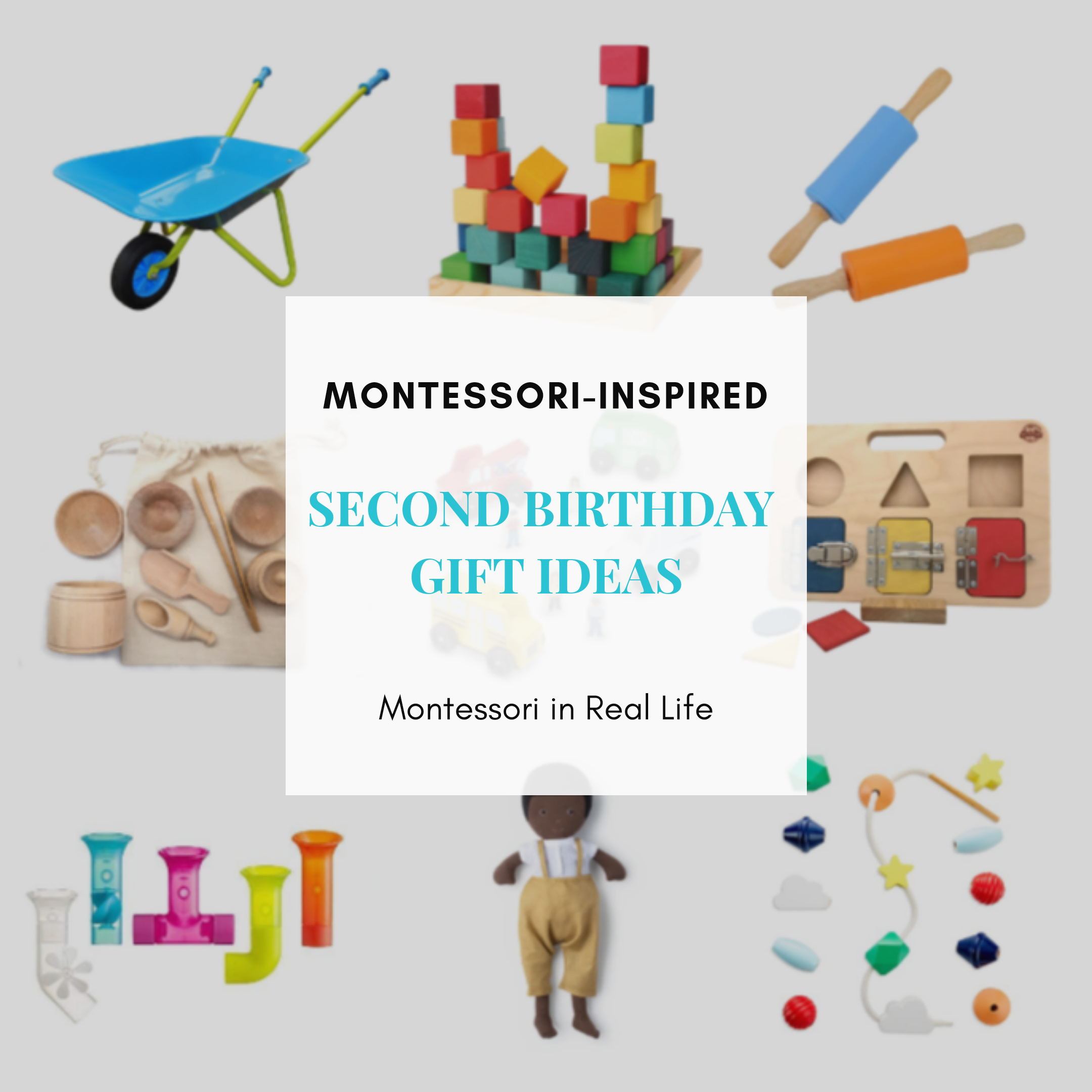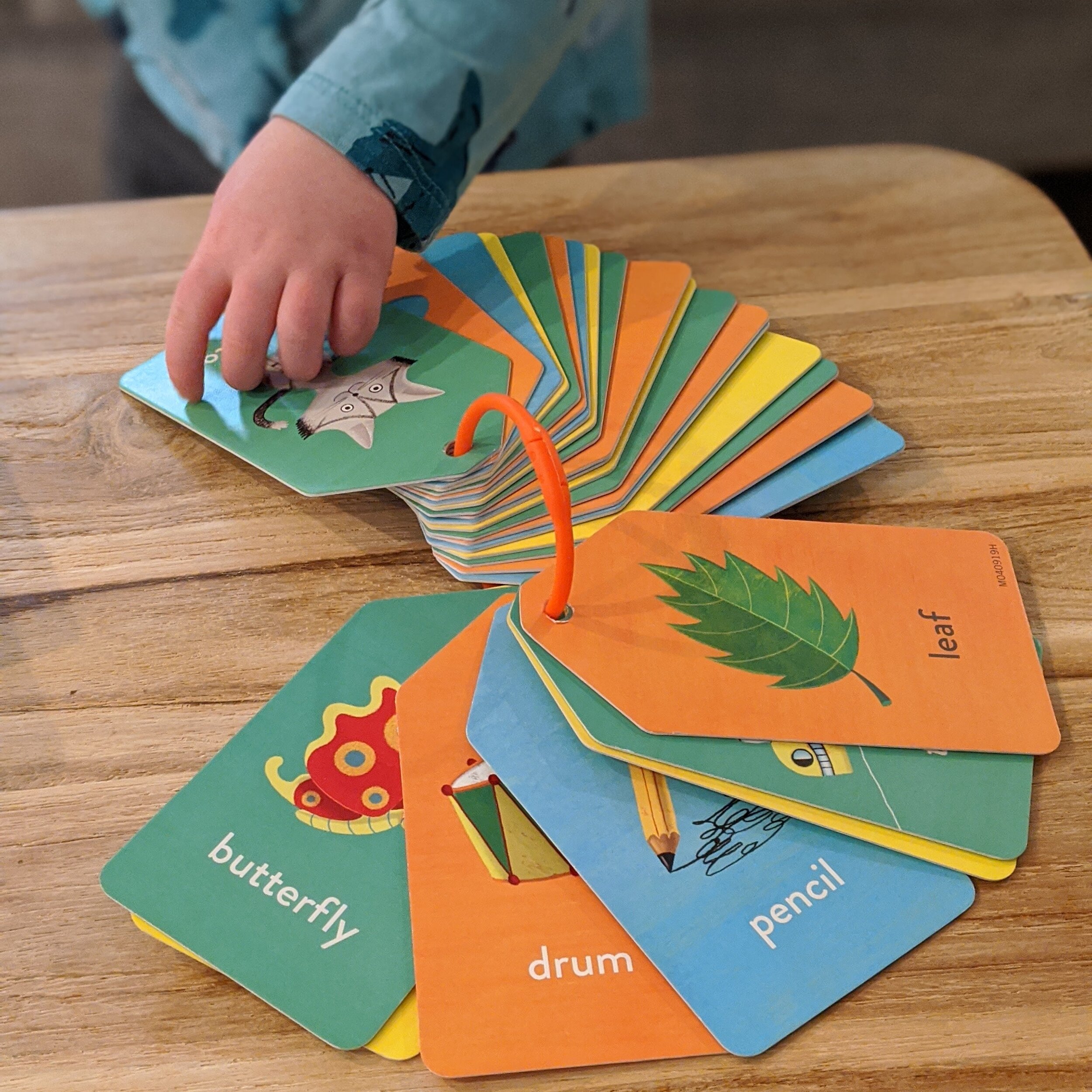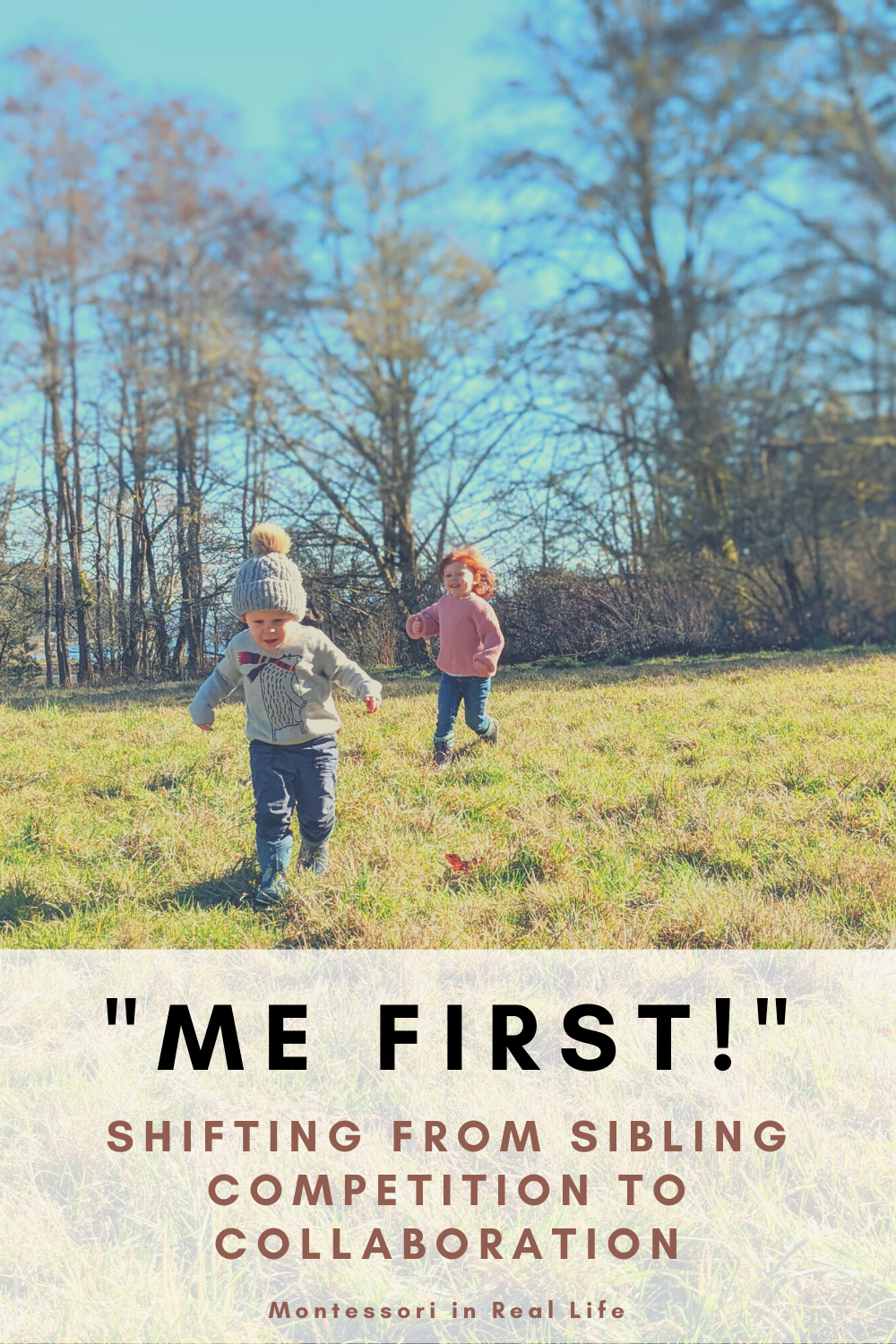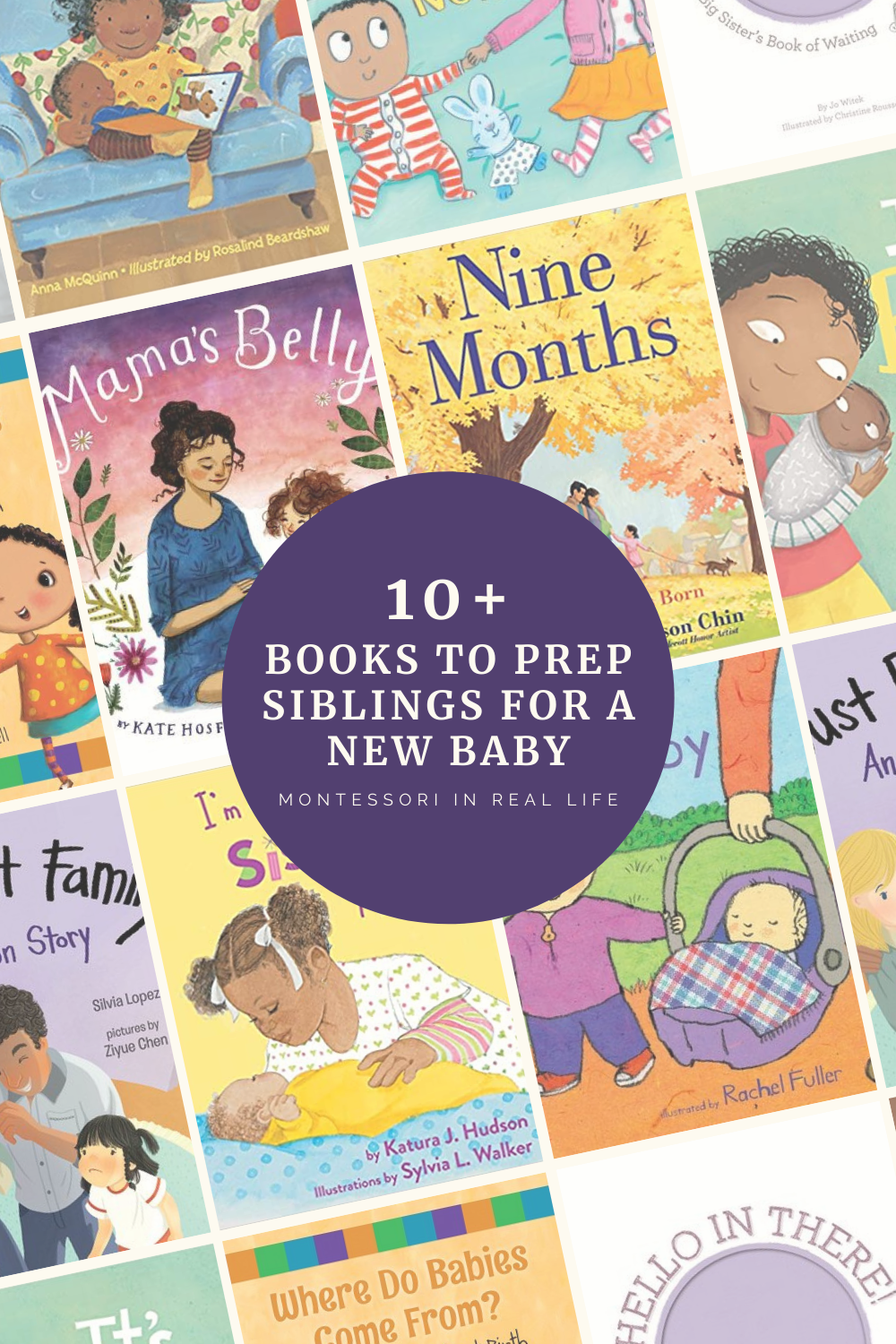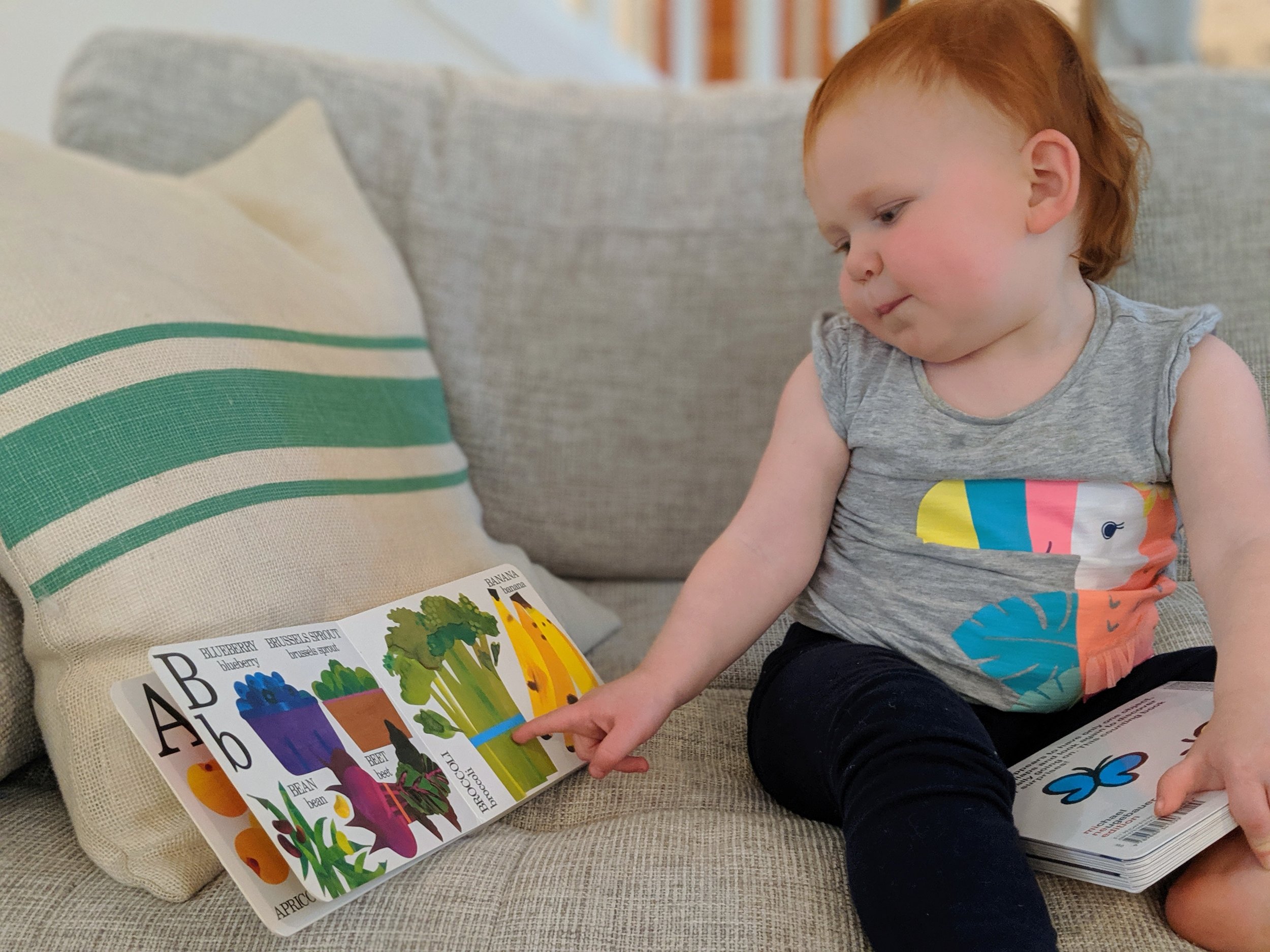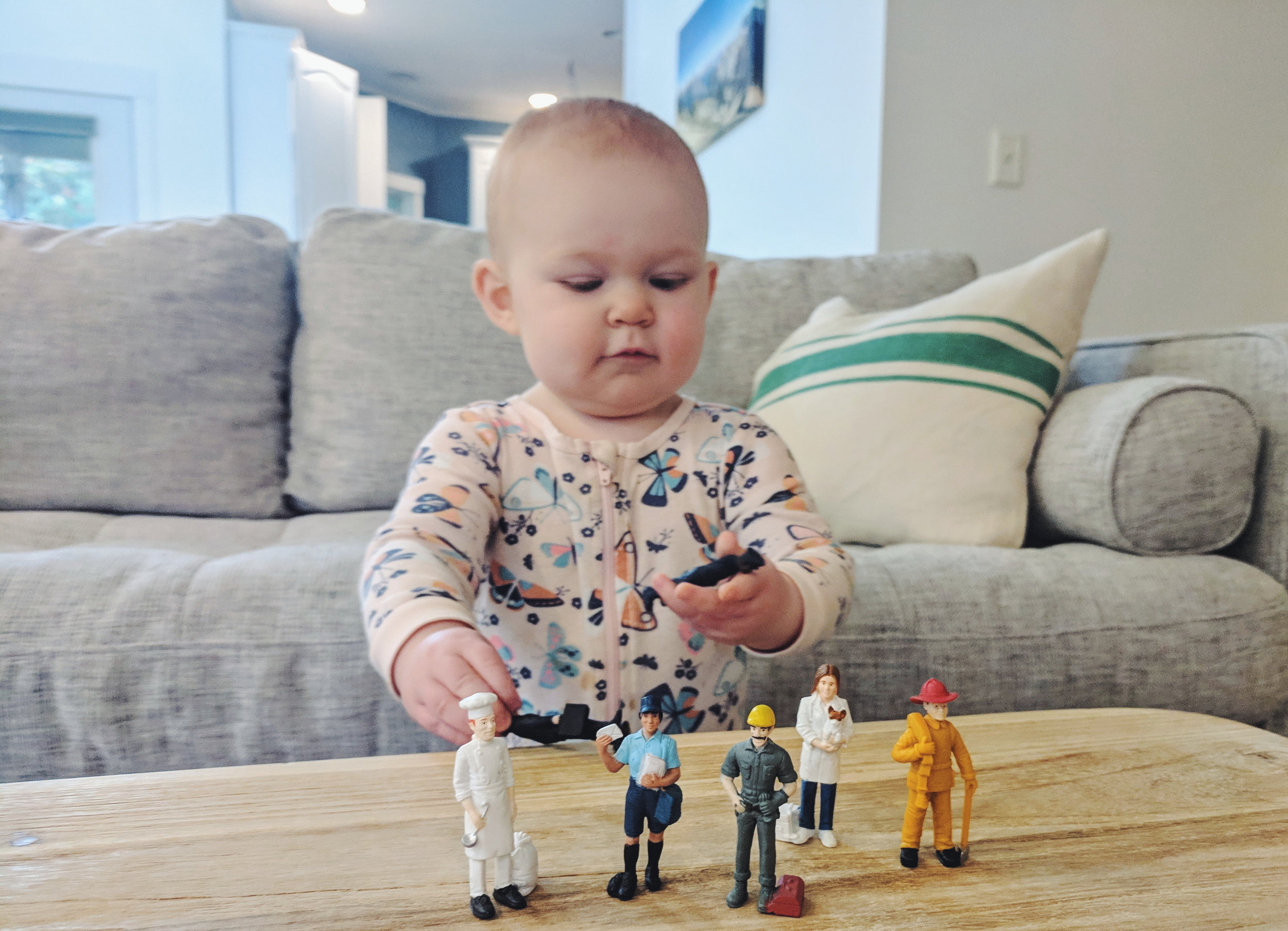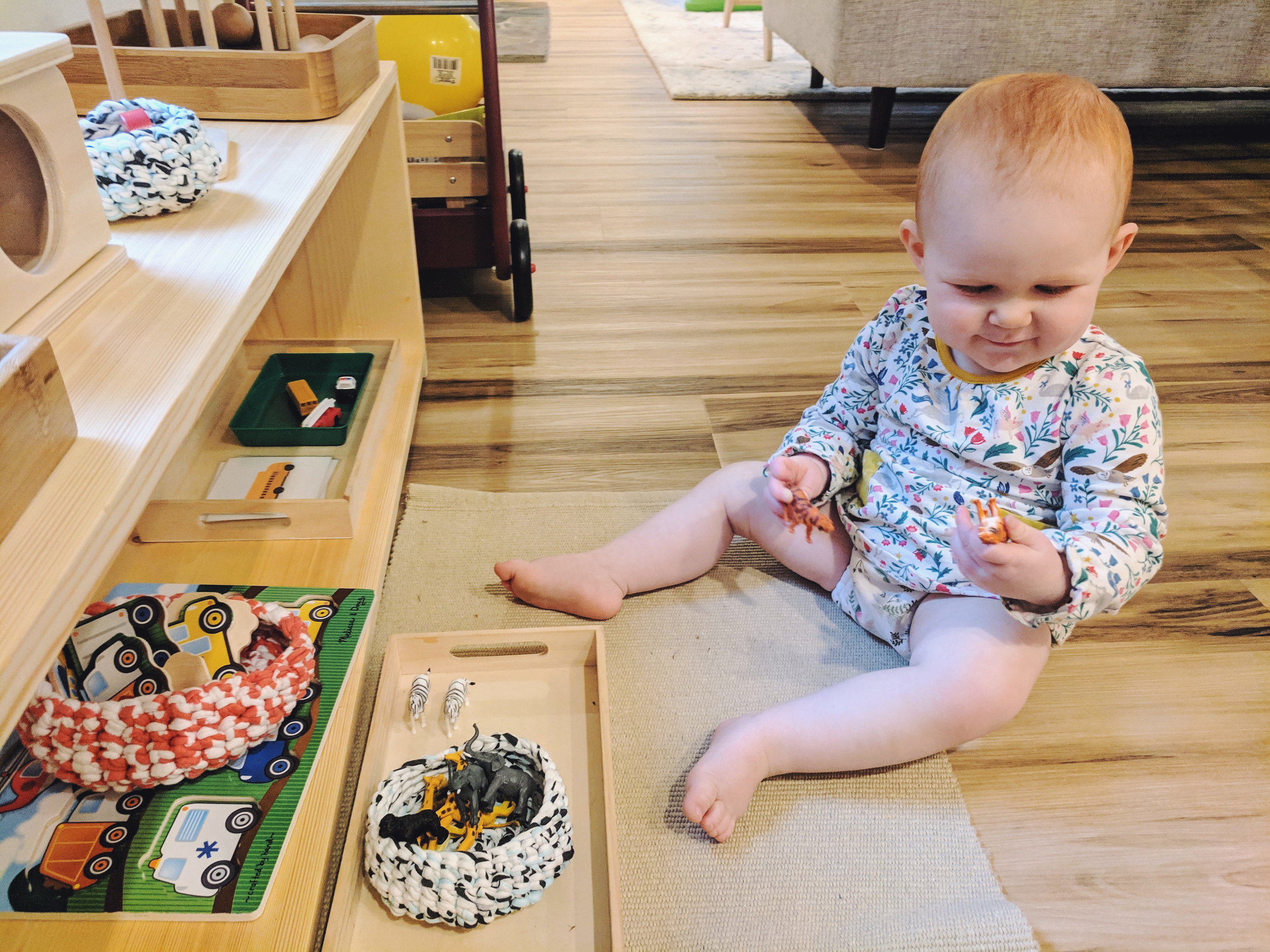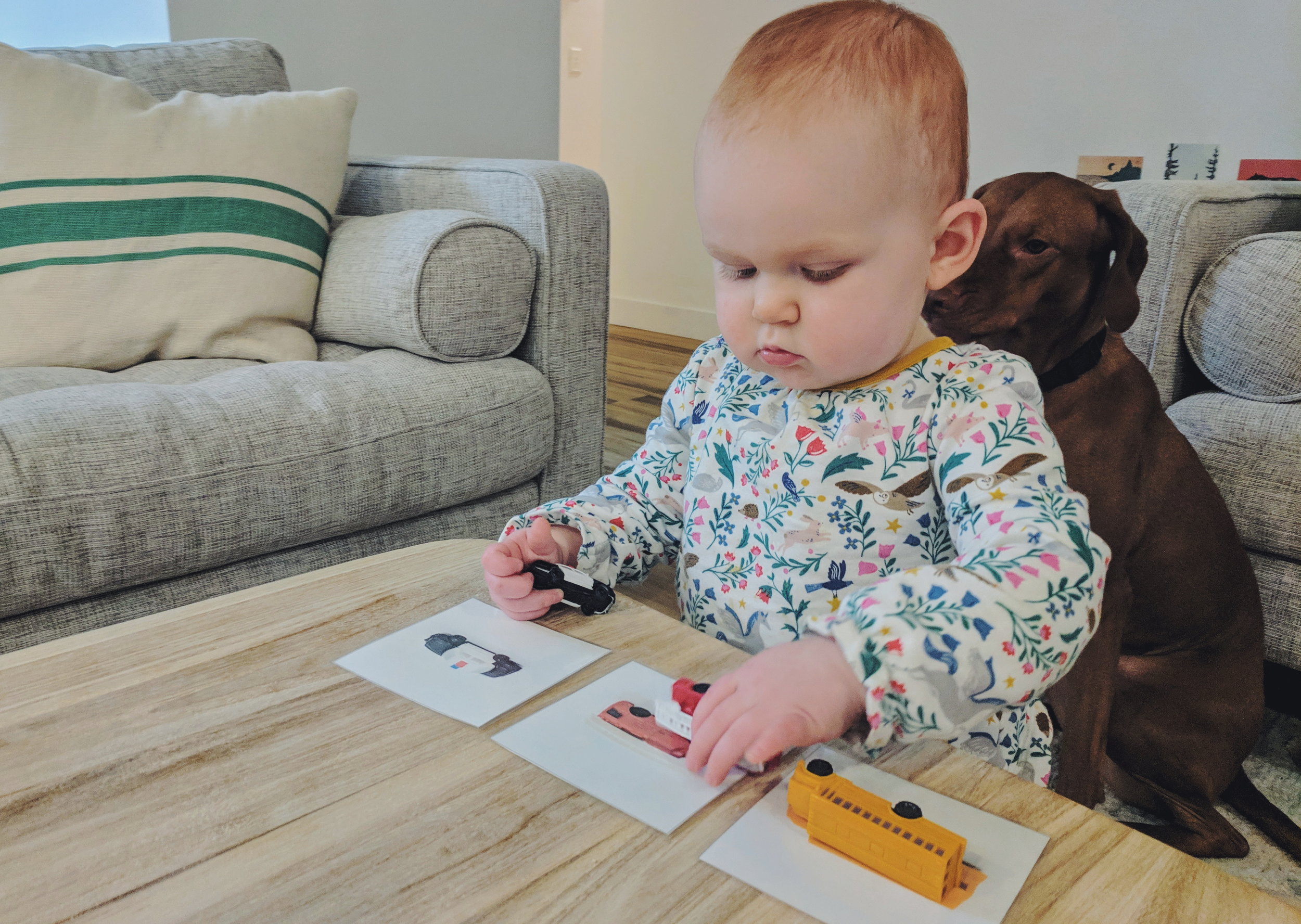A Montessori Introduction to the Alphabet
Montessori in Real Life
Note: This is an updated version of my blog post from last year, after learning through teaching my daughter!
In Montessori education, learning to read and write is a gradual, natural, and tangible process that begins unconsciously. Already D is learning how to write. By using her pincer grasp to transfer objects and hold knobbed cylinders, she’s learning how to hold a pencil. By moving her paintbrush in zigzags and circles on the page, she’s learning the fluid movements of cursive. By hearing the beginning sounds of words, she’s learning how sounds combine to make words. There is no rush to this process; all children will learn to write and read in their own time.
“What the hand does the mind remembers.” - Maria Montessori
A common theme you will see in Montessori education is starting with the concrete and moving to the abstract. The more children can work with their hands, the better they will grasp the concept in their mind. (Same goes for adults!) The more we use multiple senses (sight, touch, sound), the more neural connections are made in the brain. This is especially true when it comes to literacy. For example, a Montessori child learning the letter “m” will hear the sound of the letter, then the feel and flow of the sandpaper “m”, and the look of “m” on paper, all at the same time. This makes learning letters not only more memorable and tangible, but also more fun.
Here are a few elements that make the Montessori introduction to the alphabet a bit different:
Phonetics - Rather than read the letter (e.g. B as “bee”), the focus is on the sound each letter makes (e.g. “buh”. (It’s important not to draw out the “uh” part but rather make it a short “buh” sound.) Children learn to sound each letter out, helping them to later combine sounds to make words. It’s much more intuitive and helpful for a child to spell “cat” when they know the letter sounds than the letter names. “Cat” vs. “See-ay-tee”! We focus on the
Writing > Reading - It may seem counterintuitive, but Montessori teaches writing before reading. Children are more easily able to put letters (sounds) together to make a word than they are able to connect the letters in words on paper or in a book. By learning the sounds/phonetics of each letter, they can begin to create words themselves. You will often see primary-age children building words with the moveable alphabet, even before they can physically write words. Creating words in this concrete way helps the mind truly understand the meaning of each letter and word, before writing with pencil and paper, and often before reading.
Cursive - Not every Montessori school teaches cursive, but this is the traditional method. Though it may seem outdated, there are real benefits to learning cursive before print. With cursive writing, letters physically connect to form words, and words are spaced in sentences. Cursive also involves fluid movements which are easier and more natural for small children (look at their drawings or paintings!). Print is typically easier to pick up after first learning cursive.
Putting this into Action
Pre-Writing: When I first wrote this blog post last year, I introduced the letter with the sound. Though she showed initial interest, that was replaced with confusion about the letters. So now, I’ve removed the letter symbols for the time being, while instead finding small ways to familiarize her with letter sounds and writing skills. The first way I can help prepare D for writing is by providing materials and activities that allow for fluid movement and the pincer grasp. Though she’s had plenty of practice with fluid movements in the form of art, I really love this prewriting board by Treasures from Jennifer. This board offers beautiful patterns to trace, with a finger, small wooden stick, or beads, that pave the way for future cursive writing. On the reverse side are shapes! Whether or not you have this board, any kind of tracing is great pracice for later writing.
Learning Phonemes: I’ve learned through experience that it is very important to first introduce the letter sound without the letter symbol at all. This can happen naturally as I label objects, e.g. “buh-ball!” in our play and exploration. Simply labeling objects and the sound they start with can be a great introduction to learning letter sounds. When she began to recognize a few letter sounds as we talked about them, we began to play simple sound games with familiar objects. Her favorites are “i-spy” and “mystery bag”. For I-spy, I set out 3 or 4 objects and say for example “I spy an object that starts with the sound “cuh” and she finds the cat. This helps familiarize her with the actual meaning of letter sounds before introducing the abstract letters themselves. Another challenge is “i-spy” around the house or outside, where she has to find an object not in front of her, e.g. “I spy something that starts with “ff” and she finds a flower.
A little more advanced than I spy is the stereognostic or mystery bag, where I hide the familiar objects in a bag and say “Can you find the hidden object that starts with “Puh?” and she pulls out a pumpkin for example. I love this one because she has to hold the image of the object in her mind as she feels around with her hands. It’s important not to over-correct during these games, but rather take note of what they DO know, adjust expectations, and acknoweldge what they are trying to show you. “Oh you found the a-apple!”
Sandpaper Letters: The most traditional Montessori approach to introduce the alphabet itself is through sandpaper letters, which allow a child to trace the letter, feeling its pattern and hearing or making the sound. There are different opinions about which letters to start with but often it’s m, s, t, and a. These are all used frequently and can easily form words when combined together. Letters are introduce in lowercase first, as that is seen much more frequently than uppercase. When I introduce a new letter, I use the three period lesson to do so.
Sound Tray: Since letters are pretty abstract, a fun way to make them more concrete is through a sound basket or tray. I like “S” as it’s a familiar and frequently used letter. When D is ready, I can put the “s” sandpaper letter in a tray with several objects that start with that sound: a sailboat, school bus, spider, and strawberry. When I show her this work, I simply lay the letter out, and slowly trace it with my index and middle finger as I make the sound “ss”. Then I label each of the objects, ensuring I make a clear “s” sound at the beginning of each word. She can then make the connection between the look, the sound, and the feel of the letter, as well as how it sound with real life objects. I use familiar objects (otherwise it’s important to first use the three-period lesson to introduce each object) and then play games such as “I spy” with each object to familiarize her with the objects and sounds. This activity helps her to group these objects in her mind, as things that begin with the same sound.
Sound Matching: Once she seems to have an understanding of a set of letters, I will create a matching activity with two letters and sets of objects. She can then sort each object depending on the sound it starts with. So if I had a basket with the letter “s” and “a”, she could figure out which letter “spider” goes with and which “airplane” goes with. Another fun variation once your child knows a few sounds is to play the “I Spy” game where you ask “I spy something that starts with “a” (showing them the letter) and they have to pick something from the basket (or around the house) that starts with that sound.
There is no one perfect age to introduce these activities, but in my experience, phonemes can be introduced around 2.5 and actual introduction of the sandpaper letters after age three. Every child is different, so follow yours and their own interests and abilities. :)
Note: This post contains affiliate links. If you purchase a product through one of these links, you won’t pay anything extra, but I will get a small commission, which helps keep this blog going. Thanks for supporting Montessori in Real Life!


